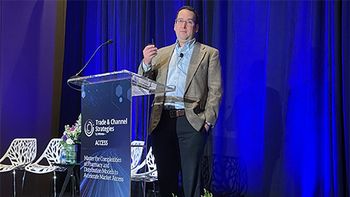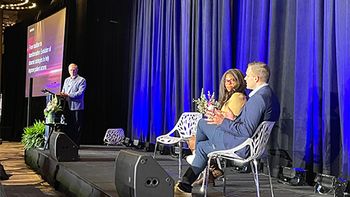
Key learnings to support biosimilar commercialization in the US
Taking cues from launches so far in oncology and rheumatology, three important considerations for biosimilar marketability are outlined
With aggregate sales expected to reach $80 billion by 2024,1 the healthcare industry is optimistic that biosimilars will continue to reduce direct spending on biologic drugs, the most expensive product category in the pharmaceutical industry. Since the FDA approval of Zarxio (filgrastim-sndz), the first official biosimilar to enter the US market in 2015, 30 additional biosimilar products have been approved with 20 of them officially launched, and nearly another 100 biosimilars in development.
However, even with this explosion of biosimilar development, biosimilar uptake remains a complex challenge that biosimilar companies must navigate as they commercialize products that can cost more than $200 million to develop.2 Biosimilars in the US cannot be generalized, and provider, payer and patient acceptance can vary based on many factors, including therapeutic area, site of care and treatment type (e.g., therapeutic or supportive), which contribute to varying adoption patterns between products, despite the inherent list price reductions.
With a large biosimilar pipeline consisting of new therapeutic areas and sites of care, now is the time to learn from the first six years of biosimilars in the US and focus on building strong launch strategies to ensure biosimilar competition effectively enables greater patient access and lower prices for highly effective, safe treatment options. Taking cues from biosimilar launches thus far in oncology and rheumatology, we have identified three key learnings to support effective biosimilar commercialization in the US.
Early, multi-stakeholder educational efforts are non-negotiable
By examining data from previous biosimilar launches in both the US and Europe, a key differentiator for the most successful launches of these products has been early education of the critical stakeholders.
Prescribers
One of the most important audiences to engage early is providers, as they hold the key to driving treatment decisions, and ultimately are the first step in the prescribing process.
When the first-ever biosimilar launched in Europe, most physicians seemed wary of the new drug designation. However, as the familiarity with the product grew through extensive biosimilar education programs, the comfort level of physicians grew from 13% in 2013, to 47% in 2015. By 2017, the infliximab biosimilars captured up 50% of the market share.3
By contrast, despite the growing success of infliximab biosimilars in Europe, the adoption of these same biosimilars in the US has been much slower. There are many reasons as to the differences seen in the US, including different healthcare delivery models and financial incentives for various stakeholders, but as market research indicates, knowledge gaps and/or clinical hesitancy continue to serve as barriers to adoption among US rheumatologists.4
Patients
While patients may not be prescribing their own medications, they are essential stakeholders when it comes to the usage of biosimilar products and will continue to have important roles in shared decision-making with their providers. While similar to the generics market,5 consumers can remain skeptical of the efficacy of biosimilar products due to their lower price point, even if the product has been approved by the FDA. The perception that a treatment may not be effective, despite any changes in clinical biomarkers, is a phenomenon that has been studied and identified with biosimilar utilization, and is referred to as the nocebo effect.6 To combat this, patient engagement and education strategies will need to be prioritized, especially when patients are transitioned from an originator biologic to a biosimilar. Specific, detailed and consistent patient messaging at the appropriate literacy levels will ensure patients have the support they need throughout their treatment journey, and also enable early and effective interventions that may be needed to ensure optimal outcomes. Equipping key stakeholders with the information needed to effectively educate patients on the clinical and financial value of a biosimilar option is a vital aspect of the commercialization process.
Other providers
Beyond physicians and patients, pharmacists, nurses, and caregivers each represent a significant subset of stakeholders when launching a product, especially when it is the first biosimilar in a therapeutic area. Earlier this summer, retail pharmacists became a key audience when the FDA approved the first insulin biosimilar,7 which is also the first interchangeable biosimilar in the US, allowing pharmacists to automatically substitute the originator product to a biosimilar without prior healthcare provider (HCP) approval, per state laws.8 As the first official biosimilar for insulin and for diabetes care, this approval further sheds light on the critical need for solid multi-stakeholder education to ensure the market is prepared and confident in these high-quality, lower-cost treatment options. With more than 1.5 million new diabetes cases diagnosed every year,9 physicians, pharmacists, nurses, caregivers, and patients all play a role in ensuring a successful treatment and management journey.
Building knowledge of the regulatory approval pathway of biosimilars
Another obstacle biosimilar products face is wide misunderstanding and/or knowledge gaps of the FDA abbreviated biosimilar approval pathway.10 For many healthcare providers, randomized clinical trials remain the gold standard for proving efficacy and safety, and the biosimilar regulatory approval process challenges the “traditional” way of evaluating products once approved.
Provider hesitancy can further be heightened when there is improper framing of the biosimilar approval pathway. Instead of focusing on the ability to receive approval more quickly, the focus should instead highlight that biosimilar approvals are met with the same level of rigor by the FDA,11 and providers and patients can have confidence in the products just as they would with originator biologics. Building a better understanding of the rigorous development and testing of biosimilars—which can often result in an even more precise product development process than the originator—is necessary when developing clinical confidence in HCPs and other key stakeholders.
Developing a proactive payer engagement strategy is critical to market uptake
The multi-payer system in the US can be, by far, one of the largest influencers—either barriers or catalysts—for biosimilar adoption due to highly varied benefit designs in managed care strategies inherent in this market. This creates a complex web of product management strategies that is further emphasized with differences between how medical benefit versus pharmacy benefit products are paid for and reimbursed. Therefore, providers, practices, health systems and pharmacies are all challenged with navigating these various factors the impact their financial considerations when making treatment decisions for patients.
Additionally, government programs can also influence the adoption and acceptance of biosimilars through value-based care programs, such as the Oncology Care Model (OCM) developed by the CMS Innovation Center. Studies have revealed trends12 that show greater biosimilar adoption among providers who participated in the OCM, which contributes to the dual responsibility of maximizing patient outcomes for the lowest cost. For oncologists participating in these innovative payment models, biosimilars represent powerful tools to provide highly effective and safe care with a less expensive alternative drug that will drive or yield the same clinical results. In comparison, other therapeutic areas use different value-based payment models (or none at all), which don’t provide the same aligned incentives to prioritize high-quality, lower-cost treatment alternatives.
With such significant influence on the performance of a biosimilar (and any product) in the market, the managed care stakeholder group is critical to engage early to ensure accessibility upon market launches.
In the end, the overall biologics market will continue to face the complexities of the US healthcare delivery model, but by leveraging past biosimilar experiences and creating a launch plan that includes a focus on key areas including multi-stakeholder education on biosimilars and the regulatory approval process, as well as a proactive payer engagement strategies, biosimilar companies will continue to make an impact on the healthcare industry by offering more affordable, high-quality treatment options.
About the authors
Sonia T. Oskouei (left) is VP of Biosimilars, and Jeff Baldetti (right) is Director of Biosimilars; both at Cardinal Health.
References
2.
3.
4.
5.
6.
10.
12.
Newsletter
Stay ahead in the life sciences industry with Pharmaceutical Commerce, the latest news, trends, and strategies in drug distribution, commercialization, and market access.




